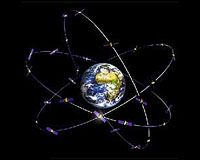 |
London, UK (SPX) Jan 06, 2011 Surrey Satellite Technology Limited (SSTL) has won a euros 10.69m contract from the European Space Agency (ESA) via Dutch Space to provide a Short Wave Infra-Red (SWIR) spectrometer as part of the TROPOMI instrument for the Sentinel 5 Precursor atmospheric monitoring mission. The SWIR spectrometer will be used to measure carbon monoxide (CO) and methane (CH4) - the latter being the second most important anthropogenic greenhouse gas - in the atmosphere. The Sentinel 5 Precursor mission will provide a source of accurate and detailed data following the completion of the European Space Agency's Envisat Mission. This will allow scientists to continue to study both air quality and climate change until Sentinel 5 is launched in the next decade. SSTL's Optical Payloads Group will coordinate an industrial consortium including the Netherlands Institute for Space Research (SRON) and Sofradir (France) to procure and integrate the precision remote sensing instrument. Dr. Matt Perkins, SSTL commented, "It is imperative that we maintain the excellent atmospheric and environmental data provided by Envisat, and SSTL is very pleased to take the lead on this important project." Dr Ruth Boumphrey, Head of Earth Observation at the UK Space Agency, said, "Climate change and air quality are global issues requiring the best scientific and technical approaches and we are very proud that the UK has the technology and experience to lead such an important European space project." The Sentinel 5 Precursor builds on the developments of the TROPOMI instrument which is led by Dutch Space, The Netherlands, as Prime Contractor. TROPOMI, which is co-funded by The Netherlands and ESA, includes substantially improved SWIR measurements compared to the SCIAMACHY instrument onboard Envisat. A push-broom replaces SCIAMACHY's scanning instrument providing much smaller pixels (7km2x7km2 vs 120km2x30km2), and the measurement sensitivity is also greatly improved. Immersed grating technology will increase the effective resolution of the instrument without increasing the size and mass of the module. Another new development lies in the use of Mercury Cadmium Telluride (MCT) detectors that are expected to be less susceptible to in-flight radiation damage than the NIR extended-wavelength InGaAs detector arrays onboard Envisat.
Share This Article With Planet Earth
Related Links Surrey Satellite Technology Limited (SSTL) The latest information about the Commercial Satellite Industry
 Russia To Launch 50 ComSats Over Next Five Years
Russia To Launch 50 ComSats Over Next Five YearsMoscow (XNA) Jan 05, 2011 Russia plans to launch five Glonass communication satellites in 2011 and 48 more later to create a Cosmonaut information highway, local media reported Wednesday. There are 20 of 26 Glonass satellites in orbit offering services. The latest launch of three Glonass satellites on Dec. 5 failed as the carrier rocket crashed in the Pacific Ocean. Officials said two more satellites are need ... read more |
|
| The content herein, unless otherwise known to be public domain, are Copyright 1995-2010 - SpaceDaily. AFP and UPI Wire Stories are copyright Agence France-Presse and United Press International. ESA Portal Reports are copyright European Space Agency. All NASA sourced material is public domain. Additional copyrights may apply in whole or part to other bona fide parties. Advertising does not imply endorsement,agreement or approval of any opinions, statements or information provided by SpaceDaily on any Web page published or hosted by SpaceDaily. Privacy Statement |